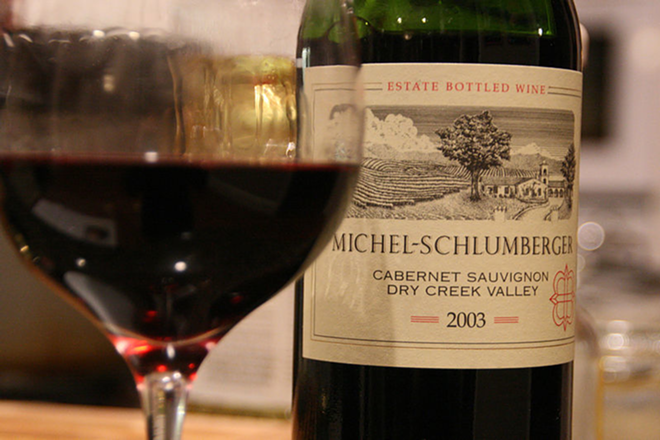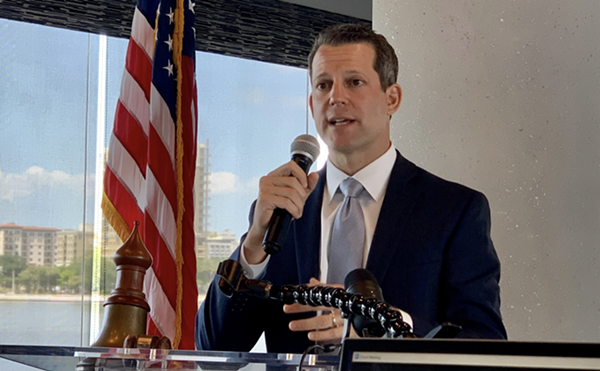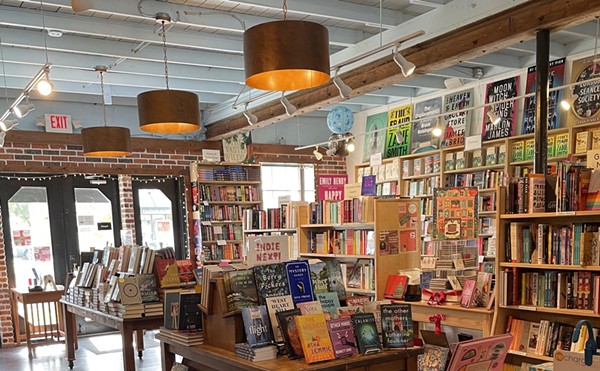Drink More Wine: Boozy grapes
Alcohol, when in balance, lends a good wine its body.
By Jon Palmer Claridge on Fri, Jun 27, 2014 at 9:54 am
For the past three months, I’ve encouraged you to use your mind as you sip wine. By now, active tasting should give you a basic understanding of the forwardness of fruit, tannins’ pucker-factor, and the palate-cleansing action of acidity. Now, let’s discuss alcohol. The percentage is listed right on the bottle and it’s an important hint about what’s inside.
Ever since influential wine critic Robert Parker lauded the ripe, full-bodied, high-alcohol 1982 Bordeaux vintage, there has been pressure on winemakers to delay harvests and aim for intense flavors. With longer hang time comes more sugar, and more sugar equals higher alcohol in the process of fermentation. This style of wine has been grabbing higher scores from wine writers; high scores mean better sales. Luckily, advances in technology have made this less risky, but many winemakers feel that the traditional style of their wines has been compelled to change by market forces.
Warmer climates also play a role, so a “new world” riesling from California is likely to be much more potent than a traditional one from a cooler “old world” climate, like Germany. These technological advances mean less bad wine, but often wine that lacks a sense of place, or “terroir.” No one wants a homogenized wine world where every bottle made from a particular grape tastes alike.
Let’s look at the typical alcohol content of some familiar wines:
Low (under 12.5 percent): Italian prosecco, German riesling, Portuguese rosé.
Moderate (12.5 to 13.5 percent): French Champagne, Spanish cava, New Zealand sauvignon blanc, French Burgundy & Bordeaux, Italian Chianti, Oregon pinot noir, Spanish Rioja.
High (13.5 to 14.5 percent): California chardonnay & cabernet sauvignon, French Sauternes, Argentine malbec, Australian shiraz, Chilean merlot, French Rhône reds, Italian Barolo.
Extreme (more than 14.5 percent): California Zinfandel, Italian Amarone, Portuguese Porto.
The growing sales of intense wines has forced maximum alcohol content up from about 13 percent to “fruit bombs” exceeding 17 percent alcohol. More alcohol also dampens wine’s characteristic bouquet. When you swirl the vino in proper stemware, the wine releases “flavor messages” through evaporation on the “nose.” The transition from liquid to air in higher-alcohol wine is suppressed, so the aromas are subdued.
If I’m just going to drink a glass of wine, I like balanced, high-alcohol wines because of the mouth feel. So often I’ll have a glass of new world chardonnay to sip, but won’t order it with food because it doesn’t go with much except perhaps butter-poached lobster, especially if it’s been aged in new oak (more on that next month). Intense wines often overwhelm the more delicate dishes we see in modern restaurants. Most sommeliers, however, direct diners to more moderate-alcohol wines with higher acidity, which regular readers know makes for a food-friendly match.
So how do you identify too much alcohol in your glass? Give the wine a swirl and sniff; if you smell a sweetness reminiscent of rubbing alcohol or you feel a slight tickle in your nose, the wine is out of balance. If the winemaker has done it right, the alcohol doesn’t make its presence known. The same is true on the palate. Do you notice that your mouth just feels pleasantly warmer or does the alcohol announce itself? If it’s the latter, the wine is too “hot.”
Alcohol, in balance, gives the wine “body.” A varietal that’s meant to be robust in style feels disappointingly thin on the palate if the alcohol is too low. High levels of alcohol act as a preservative, which is why port can last in the bottle far longer than table wine once it’s opened.
Understanding alcohol is an essential part of wine education, and one of the factors to consider when choosing a wine pairing. The exciting part of matching wine with food is that it’s a moving target. But the more you know, and the more experience you have in active tasting, the better your chances for success.

WE LOVE OUR READERS!
Since 1988, CL Tampa Bay has served as the free, independent voice of Tampa Bay, and we want to keep it that way.
Becoming a CL Tampa Bay Supporter for as little as $5 a month allows us to continue offering readers access to our coverage of local news, food, nightlife, events, and culture with no paywalls.
About The Author
Jon Palmer Claridge
Jon Palmer Claridge—Tampa Bay's longest running, and perhaps last anonymous, food critic—has spent his life following two enduring passions, theatre and fine dining. He trained as a theatre professional (BFA/Acting; MFA/Directing) while Mastering the Art of French Cooking from Julia Child as an avocation. He acted...
Scroll to read more News Feature articles
Newsletters
Join Creative Loafing Tampa Bay Newsletters
Subscribe now to get the latest news delivered right to your inbox.
















